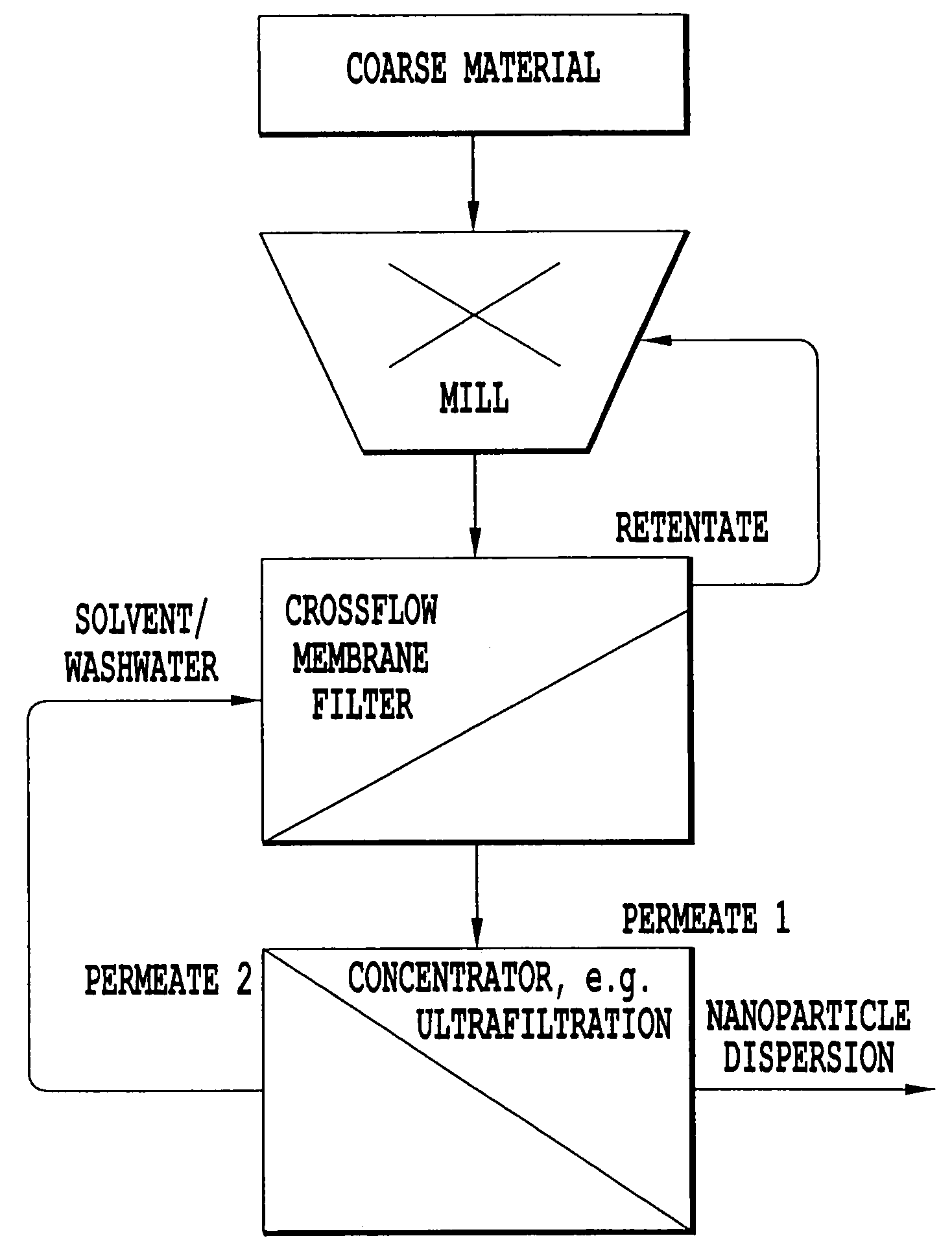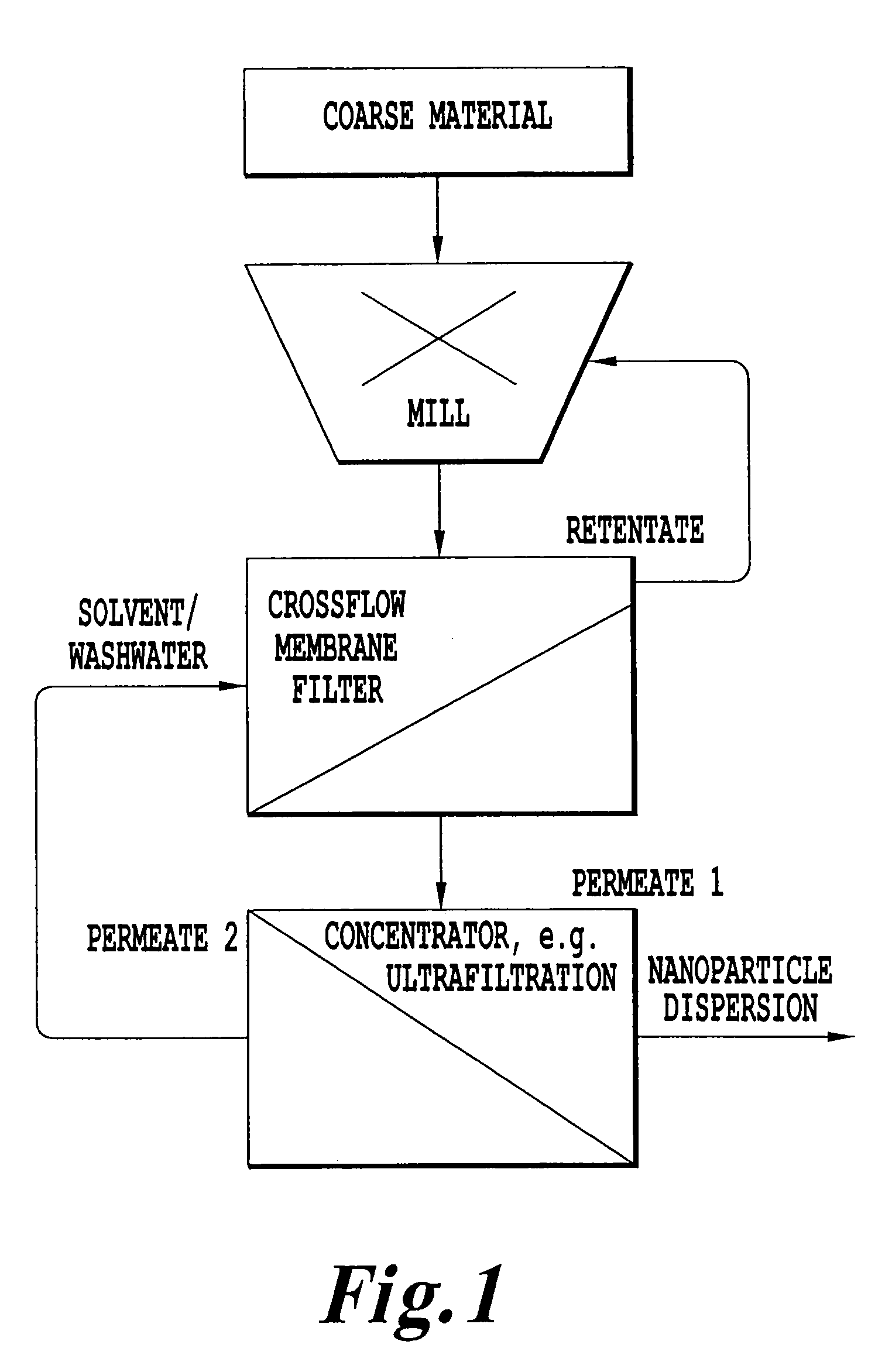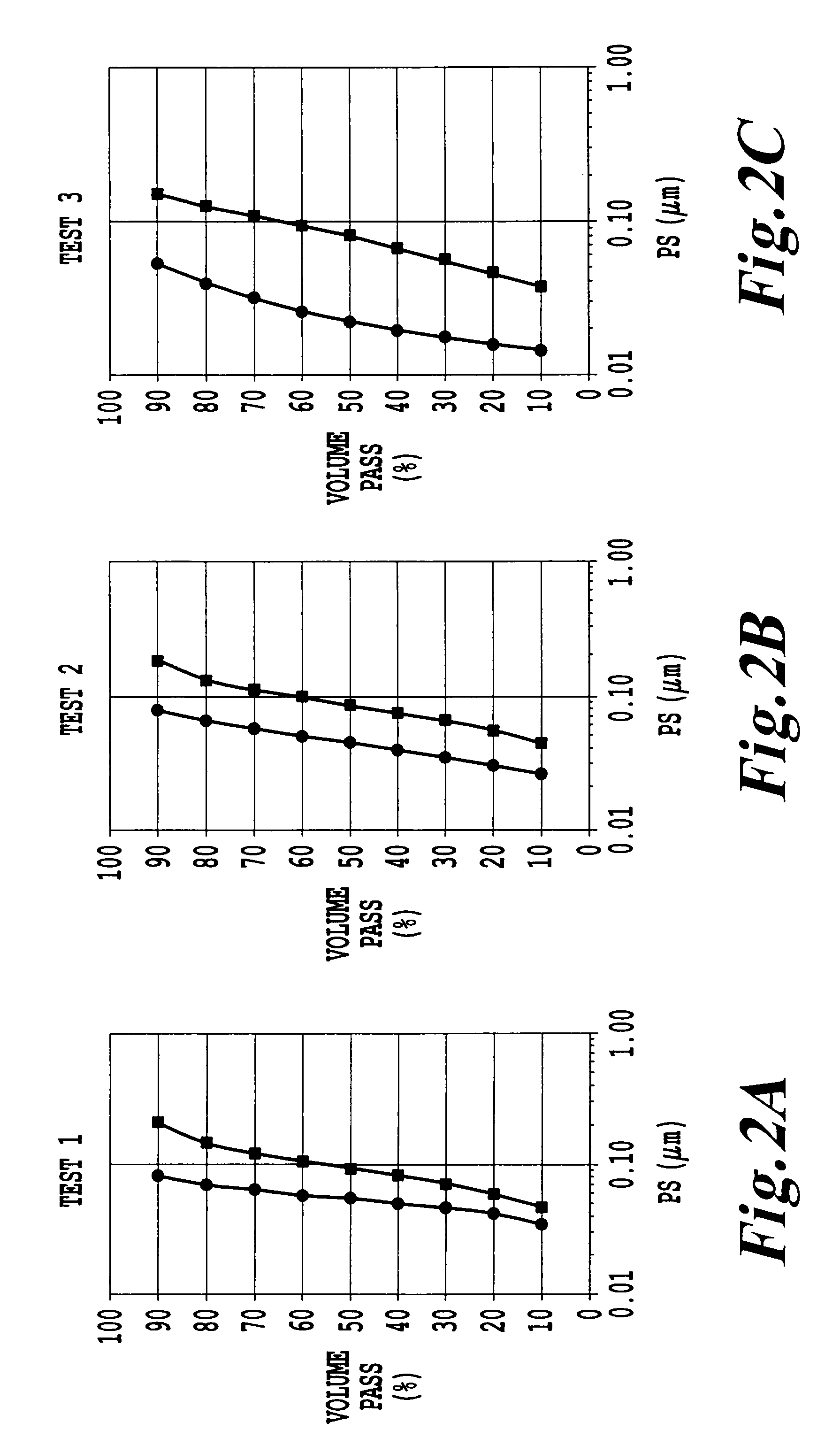Method of fractionating oxidic nanoparticles by crossflow membrane filtration
- Summary
- Abstract
- Description
- Claims
- Application Information
AI Technical Summary
Benefits of technology
Problems solved by technology
Method used
Image
Examples
examples
[0037]The tests below were performed on a 30% dispersion of titanium dioxide in water, as may be prepared, for example, by a process which is described in DE 10204470 A1. The dispersion used has a D50 value of approximately 0.09 μm and also a D90 value of approximately 0.2 μm; that is, 50% of the particles have a diameter less than or equal to 0.9 μm, and 90% have a diameter less than or equal to 0.2 μm.
[0038]The following commercially available membranes from Millipore were used:
[0039]Test 1: polytetrafluoroethylene membrane with a pore diameter of 1 μm
[0040]Test 2: polytetrafluoroethylene membrane with a pore diameter of 0.45 μm
[0041]Test 3: polytetrafluoroethylene membrane with a pore diameter of 0.2 μm
[0042]The stirrer speed was 1264 min−1 in each case. This corresponds to an average cross-flow velocity of approximately 9 m / s.
[0043]As shown in FIG. 2, the particle size distribution was measured both before (measurement series with angular measurement points) and after (measureme...
PUM
| Property | Measurement | Unit |
|---|---|---|
| Fraction | aaaaa | aaaaa |
| Pore size | aaaaa | aaaaa |
| Pore size | aaaaa | aaaaa |
Abstract
Description
Claims
Application Information
 Login to View More
Login to View More - R&D
- Intellectual Property
- Life Sciences
- Materials
- Tech Scout
- Unparalleled Data Quality
- Higher Quality Content
- 60% Fewer Hallucinations
Browse by: Latest US Patents, China's latest patents, Technical Efficacy Thesaurus, Application Domain, Technology Topic, Popular Technical Reports.
© 2025 PatSnap. All rights reserved.Legal|Privacy policy|Modern Slavery Act Transparency Statement|Sitemap|About US| Contact US: help@patsnap.com



